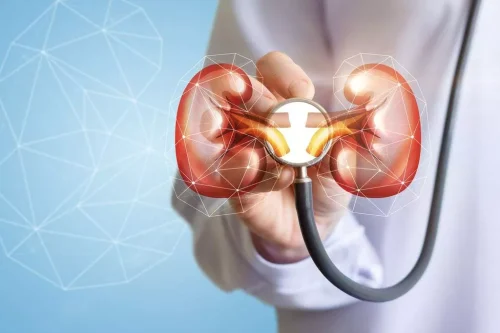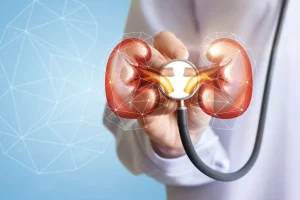
One area of interest is how the consumption of alcohol impacts blood pressure. However, even drinking small amounts of alcohol may contribute to high blood pressure. “Alcohol is certainly not the sole driver of increases in blood pressure; however, our findings confirm it contributes in a meaningful way. Limiting alcohol intake is advised, and avoiding it is even better,” Vinceti said. Drinking more than one or two drinks in a sitting has been directly linked to a rapid rise in blood pressure, which in someone with very high levels of hypertension can lead to stroke.
- To understand how much alcohol is too much, it may be helpful to know what excessive drinking means.
- Diastolic blood pressure is the pressure in the arteries between heartbeats.
- The vagus nerve is a component of the parasympathetic nervous system and is largely responsible for regulation of the heart rate at rest.
- One study found that three glasses of nonalcoholic red wine a day over a month led to a significant drop in blood pressure in men with heart disease risk factors.
- The Dallas-based organization has been a leading source of health information for nearly a century.
Facts About Excessive Drinking

Over time, high blood pressure (hypertension) puts strain on the heart muscle and can lead to cardiovascular disease (CVD), which increases your risk of heart attack and stroke. Experts have known for a while that heavy drinking — meaning eight or more drinks per week for women and 15-plus how does alcohol affect high blood pressure per week for men — raises your risk for high blood pressure (a.k.a. hypertension). When blood pressure, the force of blood flowing through your arteries, is consistently high, that ups your risk for heart attack, stroke and heart failure, as well as vision loss and kidney disease.

Effects of alcohol on your heart

We also calculated SD if 95% CI, P value, or t value was reported in the included studies, according to Chapter 7 of the Cochrane Handbook for Systematic Reviews of Interventions (Higgins 2011). If we were not able to get SD from the study authors or calculate SD from the values mentioned above, we imputed SD using the following hierarchy (listed from highest to lowest) (Musini 2014). We (ST and CT) assessed the risk of bias of included studies independently using the Cochrane risk of bias tool (version 1) according to Chapter 8 of the Cochrane Handbook for Systematic Reviews of Interventions for the following domains (Higgins 2011). The molecular mechanisms through which alcohol raises blood pressure are unclear. Alcohol can affect blood pressure through a variety of possible mechanisms. Previous research suggests that acute alcohol consumption affects the renin–angiotensin–aldosterone system (RAAS) by increasing plasma renin activity (Puddey 1985).
Immediate effects of alcohol on blood pressure
To differentiate between medium and high doses, the Canadian Centre on Substance Use and Addiction (CCSA) identifies less than 30 g of alcohol for men and less than 20 g of alcohol for women as the threshold for low risk of alcohol intake (CCSA). Thus, in our review, we used up to 30 g alcohol intake for men and up to 20 g alcohol intake for women as a moderate dose, and above this limit as a high dose. In studies where sex‐specific results were not provided, we categorised dose based on the dominating sex in terms of study participation. Despite the progress in standardizing measurement of alcohol, studies still vary in how they define the different levels of drinking, such as low-risk or moderate and heavy drinking. Most often, low-risk or moderate drinking has been defined as 1 to 2 standard drinks per day and heavy alcohol consumption as 4 or more standard drinks per day. However, ascertaining the exact alcohol consumption threshold for determining both the benefit and risk has been challenging, and threshold levels continue to differ across studies.

Characteristics of studies

In most investigations, this means consuming more than 5 standard drinks on a single occasion for men and more than 4 standard drinks for women. NIAAA defines binge drinking as a pattern of drinking alcohol that brings the blood alcohol concentration to 0.08 percent or above. A typical adult consuming the defined number of standard drinks for binge drinking would reach a blood alcohol concentration of 0.08 in about 2 https://ecosoberhouse.com/ hours (NIAAA 2015b).
- In addition, there was no evidence of nitrative damage in mice bred to disrupt (i.e., knock out) the gene for angiotensin I receptor (AT1-KO) that had been given ethanol for a similar length of time (Tan et al. 2012).
- However, modulatory influences related to drinking patterns, genetic susceptibility, nutritional factors, ethnicity, and gender also many play a role (Piano and Phillips 2014) (figure 4).
- Conditions that can disrupt sleep include sleep apnea, restless leg syndrome and general sleeplessness, also called insomnia.
- For medium doses of alcohol, moderate‐certainty evidence shows a decrease in SBP and DBP six hours after alcohol consumption, and low‐certainty evidence suggests a decrease in SBP and DBP for 7 to 12 hours after alcohol consumption.

